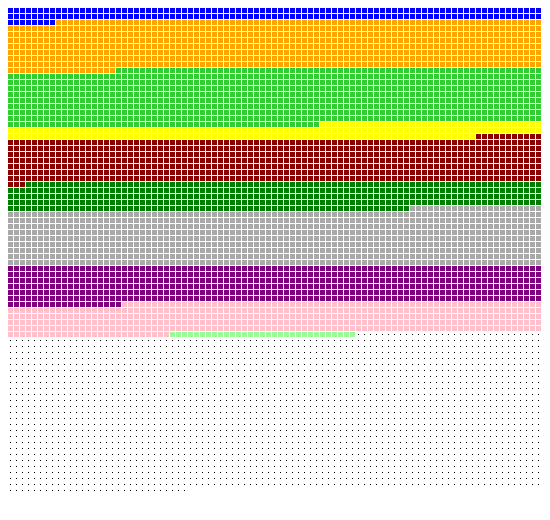[es] [he]
Project Blog? attempts to show works and projects making use of the blog platform for artistic purposes.
The term weblog first appeared in 1997, year that considered to be the year of beginning of the blog genus. However it should be noticed that different forms of electronic diaries existed online since 80s, even before the massive growth of the Internet. In 1999, with establishing of the "blogger",
[1] a tool designed for creation of personal blogs, with extension of the Internet and its accessibility, blog became one of the most popular genres. Today, there are nearly 25 millions active blogs on the net. The topics and the ways of use of the platform vary from publishing of personal diaries, political and philosophical blogs, academic blogs and thematically designated blogs dealing with pets, health, media, youth, art, literature et cetera. "What is significant about blogs is the format -- not the content".
[2] The format that is characterized by chronological posts, usually epitomized, hyperlinks building up different communities to which the bloggers relate or with which they identify themselves. The ways of delivering textual, visual, and audio information through the use of blog technology constantly develop, creating such new tools as videoblogs, photoblogs, podcasting, cellular-blogs etc.
Blog and its outstanding development questions the borders between producer and consumer, introduces alternative creators for cultural and political texts, gains audience and interlocutors on the network, that would never get recognition via traditional media channels. There are cases when amateur bloggers quit there jobs in order to commit fully to blog writing, many of them even making living out of it. There are writers that start their creations as blogs that later get published in a book format, by established publishing house.
[3]
Because of the simplicity of use, blog technology allows to those who want "to say" something, do it directly, quickly and almost unmediated. 11/9 is considered to be a key event in popularization of blog, since it permitted people to create texts, alternative to the dominant discourse, promoted by the media. The qualities of the blog give the individual a possibility to challenge the traditional way of information dissemination.
In this project we present works utilizing the blog platform for creation of artworks. The works have been chosen from the posts to the blog dedicated to this project. The works that break the conventional purpose of the platform, conveying a message or delivering data, by emphasizing poetical and aesthetic manifestations of blog, and by exposing capabilities of the blog as a platform for creating art. Blog-specific works.
Works
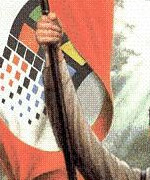 BEYOND THE RUINS by Cyrill Duneau
BEYOND THE RUINS by Cyrill Duneau
Cyrill Duneau, a poet and a prolific musician operating on the net, develops the practice of personal poetical and digital writing, turning the blog platform into a central part of the contents. Duneau mixes different texts, codes and languages making use of cut-ups from various websites and from his own creative writing. For him the blog is not only a mean of a textual expression but also an inherent part of the content.
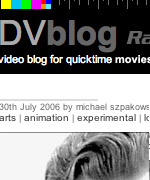 http://dvblog.org/
http://dvblog.org/
DVBLOG is a blog run by a group of artists endeavoring to present quicktime videos. The blog is perceived as an archive, as a library of digital video, accessible and multi-voiced. It is a collective blog where another media, another art make use of the blog as a playground, juxtaposing two different timecodes: that of the video and that of the blog post.
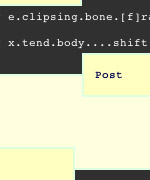 _[net]blog to log][ah!rhythm][_
_[net]blog to log][ah!rhythm][_ by mez
Blog by Mez written in mezangelle, the language that she created in her internet writing, turns to be a space for the development of an independent and unique language system, a website where her writing becomes an aesthetic, poetic and notional pursuing of personal connections between Mez and the blog medium.
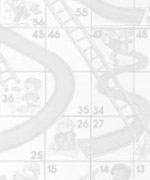 Reading Class: the Online Blog/Game that Explores Class in America by coyoteyip
Reading Class: the Online Blog/Game that Explores Class in America by coyoteyip
This work renders a computer game causing its participants to play and react. The game is made within the blog structure, transfigured from a personal to public platform, and used for discussion of social topics. The game, as coyoteyip says: "...seems at times didactic; it is unapologetically so: ReadingClass strives to be forum, a cultural engine for revealing, exploring and critiquing social class in America".
 maerd remix modules by jhave
maerd remix modules by jhave
In the work of jhave, the blog functions as raw material for another work, a remix made by decomposing a content of blog into visuals and wording. The initial, intended textual information of the blog entries disappears in the process, building up an independent poetical and aesthetic creation.
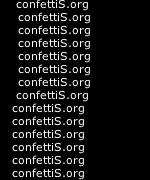 _Grandir_dayblog_débloque_ (expérience de la durée) by confettiS
_Grandir_dayblog_débloque_ (expérience de la durée) by confettiS
Similar to the artistic approach of jhave, this work produces another example of artistic use for the blog platform. The artist deconstructs the blog and produces a kind of digital fanzine. The work emphasizes the fleeting components of the genre, employing the trash aesthetics, using the copy&paste technique.
 singing bridges by bridgegirl
singing bridges by bridgegirl
The artist utilizing the blog platform to document the meeting of sound artist with various bridges in the world. Sound as medium, sound as data... A personal diary of a sound artist. The blog, extrinsically intended to describe the art project, become its essential part, adds to it a new plane and a new meaning.
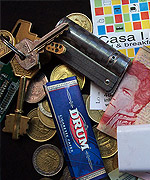 Pocketlog by Gustavo Romano
Pocketlog by Gustavo Romano
Gustavo Romano approaches the peculiarities of the blog as a creator of personal day-to-day narrative, but he changes the established language of blog and its way of storytelling articulation. Pictures of the objects accumulated in the pockets of his pants perform as narrators of his daily story. ?he remains of the day's life found in the intimate piece of wear transfigured into the story conveyed to the community of readers. Chronicles of the pant's pocket.
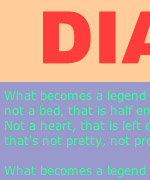 Diary of a star by Eduardo Navass
Diary of a star by Eduardo Navass
The blog of Eduardo Navass draws parallels between his personal diary and the diary of Andy Warhol. Two diaries coexist on the site in conjunction and build up a corpus of dualized personal narrative, questioning the place of a personal diary, of private and collective texts, of the public and private persona. Navass builds his own blog while establishing chronological and conceptual links to Warhol diaries.
[1]
http://en.wikipedia.org/wiki/Pyra_Labs
[2] Evan Williams,
http://writetheweb.com/Members/gilest/old/107/
[3]
http://mujergorda.bitacoras.com/1/esp/index.htm/
Related resources
Blog.Art
http://glowlab.blogs.com/blogart/2003/08/contact_blogart.html
Talking About the Weather by Maria Miranda and Norie Neumark
http://www.scanz.net.nz/weathertalk/
On Blogging as Curating by Luis Silva
http://vercodigofonte.blogspot.com/2005/11/on-blogging-as-curating.html
The Power of Blog by Bragman
http://www.no-org.net/blogs/index.php?itemid=4
The Blogger as Producer by Eduardo Navass
http://www.netartreview.net/monthly/0305.3.html
Treballs de segon curs de doctorat by Anna Fuster
http://www.iua.upf.edu/~afuster/doctorat/weblogs/
blogroll by jodi
http://blogroll.jodi.org/index.html








